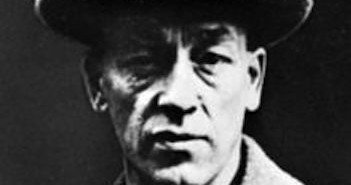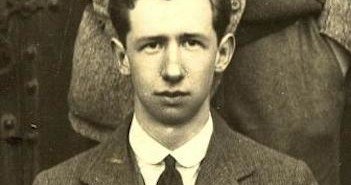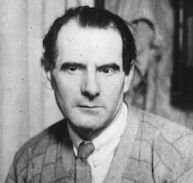Easter 1916 | Writers and fighters
History is set in stone, but people always love to imagine the road not taken. One of the great what-ifs of Irish history is what would have happened if the 1916 leaders hadn’t been executed. A less often posed question is what would the rebels have done with their lives had they survived?
A quick trawl through the seven 1916 Proclamation signatories reveals a disproportionate number of writers. Padraic Pearse was a short story writer, playwright and poet, Thomas Mac Donagh wrote poetry and plays, Joseph Mary Plunkett was a published poet and journalist, James Connolly was a prodigious political commentator. If things had been different, these men might well have pursued literary careers.
But while some writers were fighting, what were other writers doing during the Rising?

Novelist and poet James Stephens was out and about writing his seminal The Insurrection of Dublin, one of the earliest 20th century eyewitness-to-history accounts by a major creative writer, according to academic and author Declan Kiberd. Stephens filled a news vacuum – the Dublin newspapers published only intermittently during Easter Week 1916 – but the strength of Stephens’ account is that it mirrored the views of its audience.
Like most of the denizens of Dublin, Stephens didn’t know what was going on and relied on the rumours and speculation rife among ordinary people to fuel his narrative, e.g. a suggestion that there were German submarines at the bottom of the pond in Stephen’s Green. “Rumour is, basically, all the news and views not yet fit to print,” says Kiberd.
Another writer gathering rumours on the street was the naturalised Australian novelist, Nevil Shute (full name Nevil Shute Norway), author of A Town Called Alice, No Highway and On the Beach. At the time of the Rising, Shute’s father, Arthur Hamilton Norway, was head of the Irish postal service, based in the GPO. The family lived in a suite at the Royal Hibernian Hotel on Dawson Street so had a bird’s-eye view of events. A 17-year-old schoolboy at the time, Shute kept notes of what he saw and later wrote an account of the Rising for his school magazine. The early days of Easter Week seem oddly festive, in Shute’s accounts:

“Old ladies were exercising their dogs in the squares on which they lived, blind men were being led about for their daily walks, street Arabs were playing marbles on the pavements, steam-rollers were still to be seen at work. . . It almost transformed the city streets into suburban terraces to see one’s neighbours all on their doorsteps in deck-chairs doing needlework, smoking and inter-changing rumours. Some of these rumours were of course true, but it is beyond doubt that a very great many were false. For example, it was believed in a country town, about 11 miles south of Dublin, that a whale had escaped from the Dublin Zoological Gardens, had swum down the River Liffey and was devouring the inhabitants of the city.”
Shute volunteered as a stretcher-bearer for the Red Cross and tended the wounded of the Rising. As a result his accounts of events later in Easter Week take on a much darker hue:
“One poor servant girl that had to be seen too, had just opened a top storey window and had barely put her head out when the whole top of her head was taken almost off by what must have been a machine gun or more probably a Lewis gun as the military had more of them and were using them more in the neighbourhood. She was found exactly where she was standing leaning on the window with the top half of her head hanging off and the window sash bespattered with her brains.”
Most writers linked with The Rising took no part
Unlike Stephens and Shute, the two writers most identified with creating the Rising on the page were not directly involved in events at all. From opposite ends of the Protestant social scale, upper-class Nobel laureate W.B. Yeats and working-class playwright Sean O’Casey explored the doubts and misgivings of the Rising’s “success” from a distance, both philosophically and geographically.
Most people mistakenly believe that Sean O’Casey – whose Dublin trilogy, Shadow of a Gunman, Juno and the Paycock and The Plough and the Stars charts the political foment of the turbulent decade from the Dublin Lock-out to the Civil War – was a combatant or at least a supporter of the Easter Rising. Given his ardent nationalism and socialism, he should have been.
Although O’Casey had been heavily involved in the Irish Republican Brotherhood (IRB) and in 1914 had joined the Irish Citizen Army (ICA), he did not support the Rising and played no part in it. He was distrustful of the move towards violence but in fact, it was a procedural wrangle with Constance Markievicz that put an end to O’Casey’s activism.

O’Casey believed that the countess’s membership of the nationalist Cumann na mBan, the female branch of the Irish Volunteers, should disqualify her from the Irish Citizen Army. ( The Volunteers had been set up as a response to Edward Carson’s Ulster Volunteer Force: the ICA had grown out of the Dublin Lock-out. ) O’Casey suspected Markievicz of spying for the Volunteers and demanded she be expelled. The matter was put to a vote and when O’Casey lost, he walked out. The irony was that in January 1916 the Volunteers and the Citizen Army joined forces but at that stage O’Casey had cut his links with the Republican movement. As historian Padraig Yeates observed in his book, Lockout, “the upshot of the faction fighting was the Citizen Army lost a clerk and Ireland gained a playwright”.
O’Casey sat out the Rising hunkered down with his elderly mother in East Wall, though Christopher Murray, O’Casey’s biographer, notes in Sean O’Casey: Writer at Work that he spent several nights of Easter Week roaming the city despite the fact martial law was in force. Known as a nationalist sympathiser, he was picked up on Thursday, April 27 during a sweep of the area and held by the British Army for two nights.
“The internees were deposited in the cellar of a huge granary nearby, where they remained until Saturday morning, playing cards and chatting with the soldiers and seeing, in the distance, a faint glow as O’Connell Street went up in flames,” according to Martin Marguiles, author of The Early Life of Sean O’Casey.
If O’Casey’s Rising was spent playing cards with the enemy, Yeats, the great poetic chronicler of the nation’s birth-pangs, was reading to them in London, where he was based at the time. Nine days before the Rising on April 15, Yeats had been invited to a charity reading in Piccadilly, chaired by the Chief Secretary of Ireland, Augustine Birrell, whom The New Statesman observed, spent most of the evening “with his head buried in his hands” — an attitude many would see as Birrell’s approach to the Rising itself.
‘A piece of childish madness’
Yeats’ first reaction to the news from home was to dismiss the Rising as “a piece of childish madness”. But he and Lady Gregory, with whom he communicated feverishly in the weeks following the Rising, were shocked to learn that they knew some of the Rising’s leaders personally. Yeats had allowed Pearse to stage free productions of his plays in St Enda’s School and MacDonagh had dedicated a book of his poems to Yeats. He moved in the same circles as Joseph Plunkett’s aristocratic nationalist family and, of course, Constance Markievizc had been a childhood friend in Sligo.
But though Yeats knew Pearse, he had publicly severed any association with Pearse’s politics, claiming that he was “flirting with the gallows-tree”.
As Yeats’ correspondence with Lady Gregory and his sister, Lily – the only member of the extended Yeats family who was in Dublin for the Rising – continued in the weeks following, his attitude to the insurrectionists begins to change. The execution of the Rising’s leaders contributed to the change of heart but distance from events was also a factor. He had received a letter from Maud Gonne (whose estranged husband, Captain John McBride was among those put to death) suggesting that the Irish cause had been elevated by the Rising “to a position of tragic dignity”.
“. . .she saw the ruined houses about O’Connell Street & the wounded & dying lying about the streets, in the first few days of the war. I perfectly remember the vision & my making light of it & saying that if a true vision at all it could only have a symbolical meaning,” Yeats wrote.

But by May 23, he was already beginning to see the late rebels as “the ablest & most fine natured of our young men”. He was already planning to write about the executed men in a poem that was to become Easter 1916 – “a terrible beauty is born” – perhaps the most quoted poem of the Rising. Though written between May and September of that year, it was not published till 1921.
O’Casey took 10 years to distil the events of the Rising into dramatic form in The Plough and the Stars. The play premiered at the Abbey Theatre in May 1926. The Rising was a terrible mistake, O’Casey told Lady Gregory, shortly before the play was staged, “. . . and we lost such fine men. We should have won freedom by degrees with them.” It was these sentiments, explored through the characters, and the depiction of the Rising as a failed revolution – as well as perceived mockery of the Tricolour and scenes of citizen looting – which excited riots in the Abbey. O’Casey had further offended by including an off-stage character, The Figure in the Window, whose oratory is based on Pearse’s speeches.
Republican women, led by Hannah Sheehy-Skeffington, and including Pearse’s mother and Mrs Tom Clarke, attempted to storm the stage. While Yeats tried to quell the high feelings by declaring the play as O’Casey’s artistic apotheosis, his words fell on deaf ears and the police had to be called to clear the theatre.
The incendiary effects of The Plough were down to O’Casey’s fearlessness as a dramatist, his distance from the events portrayed and the timing of the staging. As Christopher Murray points out, the 10-year anniversary of the Rising had just passed, but there had been no special public commemoration. “Most people wanted to forget all about the violence of recent years and get on with building and so-called decent life,” Murray observes. The Rising was a “dead issue. O’Casey’s play, by an ironic process of revisionism, made it a live one”.
Mary Morrissy’s latest work is Prosperity Drive, an anthology of linked stories set around a Dublin street. A previous book, which was featured on BBC Radio Four, was The Rising of Bella Casey, based on the life of Sean O’Casey’s older sister.
